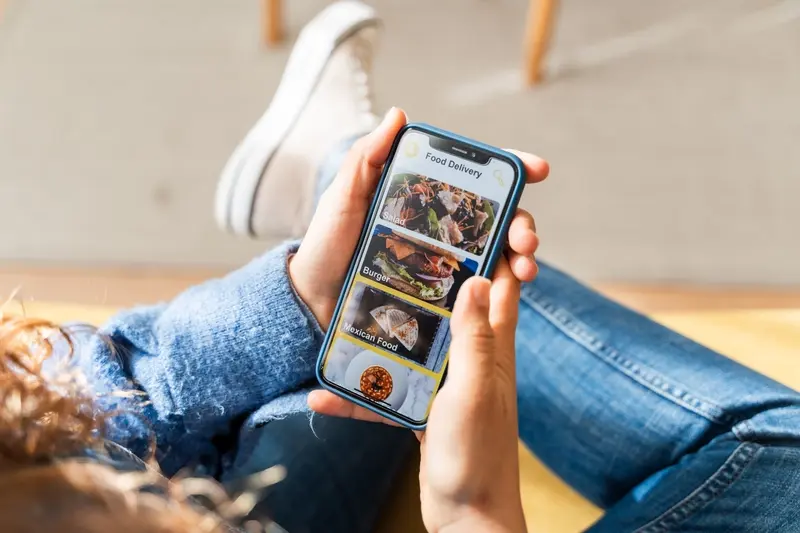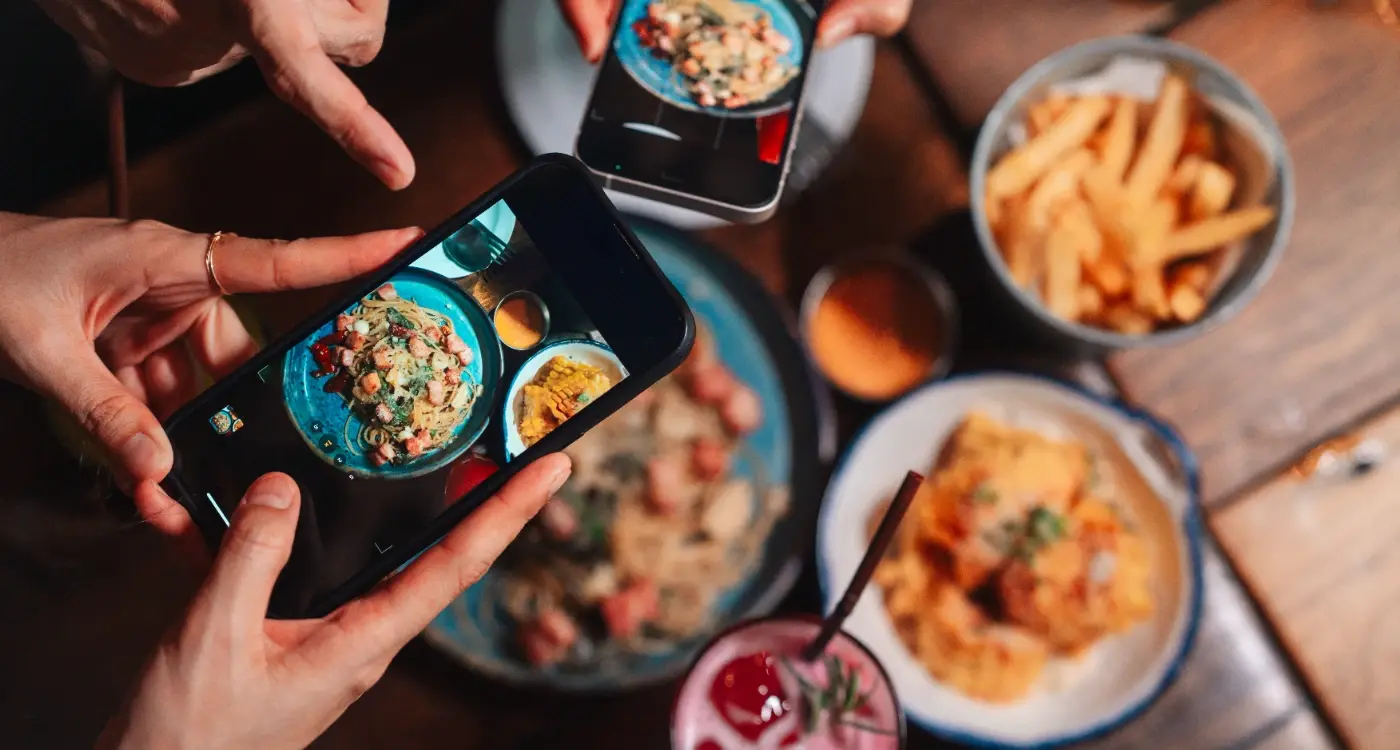Do I Need a Food Delivery App or Can I Just Use Third-Party Platforms?
Did you know that food delivery apps take up to 30% commission from restaurants? That's right—nearly a third of every order goes straight to the platform, not your business. Yet millions of restaurants worldwide rely on these third-party platforms to reach customers. It's a fascinating paradox that raises a question every restaurant owner faces: should you build your own app or stick with existing platforms?
This decision isn't just about technology; it's about your entire business strategy. The choice you make will affect your profit margins, customer relationships, and long-term growth potential. Some restaurants thrive using third-party platforms, whilst others find more success with their own branded apps.
The best business strategy isn't always the most obvious one—sometimes the path that seems harder upfront leads to greater rewards down the line
Throughout this guide, we'll explore both sides of this equation. We'll look at the real costs of using third-party platforms, the benefits of having your own app, and when each approach makes sense for different types of businesses. By the end, you'll have a clear understanding of which path aligns with your goals and budget. No fluff, no sales pitch—just practical insights to help you make the right decision for your restaurant.
What Are Third-Party Food Delivery Platforms
Third-party food delivery platforms are companies that connect restaurants with customers through their own apps or websites. Think of them as the middleman between your restaurant and hungry customers. The big names you'll recognise include Uber Eats, Just Eat, and Deliveroo—these platforms have millions of users already signed up and ready to order.
Here's how they work: you list your restaurant on their platform, customers browse your menu through their app, place orders, and the platform handles payment processing. They either use their own delivery drivers or coordinate with your staff to get food to customers' doors. Sounds simple, right? Well, it is—but there's more to consider.
The Trade-Off
These platforms give you instant access to a massive customer base without needing to build your own app or marketing strategy. You can start taking orders within days of signing up. But here's the catch—they take a commission from every order, typically ranging from 15% to 30% of your total sale value.
You're also playing by their rules. They control the customer experience, set delivery fees, and own the customer relationship. When someone orders through Uber Eats, they're an Uber Eats customer first, not necessarily your restaurant's customer. That's something many restaurant owners don't realise until later.
The Real Cost of Using Third-Party Platforms
When I first started working with restaurant clients, many of them thought third-party platforms were a goldmine. Free marketing, instant customers, no upfront costs—what's not to love? Well, quite a lot actually.
The commission fees are the obvious starting point. Most platforms charge between 15-30% per order, which might not sound terrible until you do the maths on your profit margins. If you're making a 40% profit on food, suddenly losing 25% to commission fees means you're down to just 15% profit. That's before you factor in your other costs like staff, rent, and utilities.
The Hidden Costs You Don't See Coming
Commission fees are just the tip of the iceberg. Many platforms charge extra for promotional spots, priority listing, and even customer service support. Some require you to offer discounts or meal deals that eat into your margins even more.
Then there's the customer data issue—you don't own it. When someone orders through these platforms, you can't build a relationship with them directly. You can't send them birthday offers, loyalty rewards, or even tell them about your new menu items.
Track your actual profit per order after all platform fees and promotional costs. You might be surprised how little you're actually making.
The Real Numbers
- Commission fees: 15-30% per order
- Promotional costs: 5-15% additional
- Customer acquisition cost: You pay every single time
- No customer data or direct relationship
- Limited control over pricing and presentation
The harsh reality is that whilst third-party platforms can bring volume, they often don't bring sustainable profit. Many restaurant owners I've worked with describe feeling trapped—they need the orders but can't afford to keep paying the fees long-term.
Benefits of Having Your Own Food Delivery App
Having your own food delivery app is like having your own shopfront—except this one fits in your customer's pocket. After working with restaurant owners for years, I can tell you that the benefits go far beyond just avoiding those hefty commission fees we talked about earlier.
First up, you get to keep all your customer data. This might sound boring, but it's actually gold dust for your business. When someone orders through your app, you learn their favourite dishes, when they typically order, and how much they usually spend. You can't get this information when you're using third-party platforms because they keep it all to themselves.
Complete Control Over Your Brand
Your app means your rules. You decide how your menu looks, what colours to use, and how customers experience your brand. There's no generic template or standard layout—just your restaurant exactly as you want it presented. Plus, you can run your own promotions without having to compete with every other restaurant on the same platform.
Direct Customer Relationships
When customers download your app, they're choosing you specifically. They're not browsing through hundreds of other options at the same time. This creates a much stronger connection between you and your customers, leading to better loyalty and more repeat orders.
When Third-Party Platforms Make Sense for Your Business
Look, I'm not here to bash third-party platforms—they genuinely work well for some restaurants. After years of working with food businesses, I've noticed certain patterns about when these platforms actually make sense for your business strategy.
If you're just starting out, third-party platforms can be a lifesaver. They give you immediate access to customers without the upfront cost of building your own app. You can test your delivery service, work out the kinks, and see if there's real demand before investing in custom development.
When You're Testing the Waters
Small independent restaurants often find third-party platforms perfect for dipping their toes into delivery. The setup is quick, the customer base is already there, and you can focus on what you do best—making great food. Plus, if delivery doesn't work out, you haven't lost a massive investment.
The beauty of third-party platforms is that they let you start delivering tomorrow, not in three months
Limited Resources, Maximum Reach
Some businesses simply don't have the budget or team to manage their own app. If you're running a small operation with tight margins, paying commission fees might actually be cheaper than hiring developers and marketing your own platform. The maths doesn't always favour custom apps—sometimes the practical choice is the right choice for your business strategy.
Building Your Own App: What You Need to Know
Right, so you've decided a custom food delivery app might be the way forward for your restaurant. Good choice—but let's talk about what you're actually signing up for here.
First things first: building an app isn't just about having a developer knock something together over a weekend. You'll need a proper development team, which means finding people who know their way around both iOS and Android development. Then there's the backend work—servers, databases, payment processing systems. It's quite a lot when you think about it.
Key Features You Can't Skip
Your app will need some non-negotiable features to compete with the big players:
- User registration and login system
- Menu browsing with photos and descriptions
- Shopping cart and checkout process
- Multiple payment options (cards, digital wallets, cash)
- Order tracking and status updates
- Push notifications for order updates
- Customer reviews and ratings
- Delivery scheduling options
Budget Reality Check
Here's where it gets interesting—the money side of things. A basic food delivery app typically costs between £15,000 and £50,000 to build properly. That's just the start though; you'll have ongoing costs for hosting, maintenance, and updates. Don't forget about marketing the app once it's live either.
The timeline? Expect at least 3-6 months from start to launch if you want something that actually works well.
Making the Right Choice for Your Business Strategy
After working with restaurants for years, I've noticed that the most successful ones make decisions based on their actual situation—not what they think they should do. The choice between third-party platforms and your own app isn't about what's trendy or what your competitor is doing; it's about what fits your business model and where you want to be in two years' time.
If you're just starting out or testing the waters with delivery, third-party platforms offer a brilliant way to get going without massive upfront costs. You can validate demand, learn about your customers, and build up your delivery operations. But here's the thing—they should be treated as a stepping stone, not a permanent solution.
Building Your Decision Framework
The restaurants that thrive long-term are those that view their business strategy holistically. They use third-party platforms to grow initially, then gradually shift towards their own app as they build customer loyalty and understand their market better.
Start with third-party platforms to test demand, then invest in your own app once you have steady delivery sales and understand your customer base.
Here's what you should consider when making this choice:
- Your current delivery volume and growth rate
- How much commission fees are eating into your profits
- Whether you have a loyal customer base ready to switch
- Your budget for app development and marketing
- Your long-term vision for customer relationships
The Hybrid Approach
Many successful restaurants don't treat this as an either-or decision. They use both—maintaining their presence on third-party platforms while building direct relationships through their own app. This strategy gives you the best of both worlds: the reach of established platforms and the control of your own customer data.
Conclusion
After working with restaurants for years, I've learned that there's no one-size-fits-all answer to whether you need your own food delivery app. Some businesses thrive on third-party platforms—and that's perfectly fine. Others find that building their own app transforms their entire operation.
The truth is, your decision should come down to where your business is right now and where you want it to go. If you're just starting out or testing the waters, third-party platforms give you a quick way to reach customers without the upfront investment. You can focus on perfecting your food and service whilst someone else handles the tech side.
But if you're serious about building a brand, keeping more of your profits, and controlling your customer relationships, then your own app becomes much more appealing. Yes, it requires more work upfront—and ongoing maintenance—but the long-term benefits often outweigh the initial costs.
Think about what matters most to your business: immediate reach or long-term control? Quick setup or better profit margins? There's no wrong answer, and many successful restaurants use both approaches together. Start with what makes sense for your current situation, then evolve as your business grows.
Share this
Subscribe To Our Learning Centre
You May Also Like
These Related Guides

How Long Does It Take to Develop a Food Delivery App From Scratch?

What's Different In Building a Restaurant App and a Food Delivery App?



